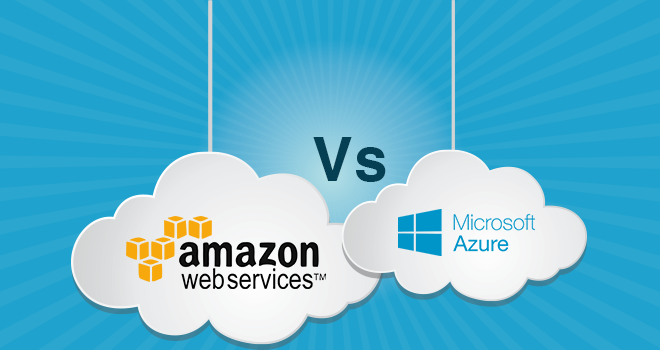AWS vs Azure - Which one is the most suitable for your business?
Amazon Web Services and Microsoft Azure public cloud, arguably have the most elaborate and defined set of services to offer. Although there are other...


While you run a site, a web application or some other sort of service on the Internet, it is regularly a smart thought to watch out for its accessibility and execution. Clearly, you would prefer not to manually check in consistently to check whether everything is still up and running. So, the next level solution is - automate this!
Moving from application improvement in a customary server data center to a serverless domain like AWS Lambda demands a different setting in the way we approach issues and solution plan.
In this blog, we will take a look at how monitoring ought to be done in a serverless world, what metrics are important to control, and best practices to guarantee our applications are working ideally.
Lambda is Amazon's serverless computing platform which enables you to perform one-off performances of little potentials and pay just for real execution time.AWS Lambda is an event-driven computing setting in the Amazon cloud that extracts away the fundamental physical computing framework.
With a serverless environment like Lambda, the vendor deals with the underlying servers and pipelines, letting you center solely around your application code.
This implies you don't have to stress over what amount of compute power your servers have access to perform your code. Lambda scales the available register ability automatically to guarantee your code is executed.
So also, the method by which we monitor our environment needs to evolve too.
Lambda is suitably incorporated with a few AWS administrations you may as of now be utilizing, for example, SES, ELB, and S3.
To monitor applications running in AWS Lambda presents one of a kind complication when contrasted with monitoring a customary application server. First of all, there is no extensive host you can control, which implies there is no place to drop a checking specialist to gather telemetry information.
"Serverless" does not imply that there is no PC executing code, though. Or maybe, it implies that developers don't have to provision and manage application servers to operate their code. The pressure of patching, ensuring, and keeping up the foundation behind a Lambda function tumbles to Amazon Web Services. Sending serverless code is as straightforward as transferring your application to AWS and setting some runtime requirements like the max memory allocated and execution time.
So, in a serverless deployment, due to such abstraction you do not have access to every traditional system metric such as disk usage and RAM consumption that could notify you of the strength of your system. However, with the precise instrumentation of your supporting services and applications, you can assure that your systems are visible, also in the deficiency of metrics on memory, CPU, and the related.
We need to adapt our approaches so as to retain observability while maintaining the data we’re inspecting is palatable. One way is classification - corresponding, comparing and arranging our functions and data into groups that support up to know what’s truly going on.
The aim of an application that is hosted by applying a solution like AWS Lambda is that the functions themselves must be petty and very performing. Keeping this in mind, we don't need our monitoring solution to add unnecessarily to the workload for every citation.
Concerning all bigger applications and much more so for micro-services, end-to-end monitoring is expected to get full visibility into all levels of your stack. Consider about a lambda function that calls a moderate API. This won't just expand the runtime of your function which includes more costs, it will likewise influence the general execution of your application.
Taking everything into account, Lambda monitoring lets you to -
Lambda performance metrics can be divided into two classes -
AWS principally utilizes CloudWatch to monitor the Lambda achievement. CloudWatch traces metrics such as the number of functions performed, latency in performance, and failures amid execution.
These metrics are accessible through the AWS CloudWatch support and give you the raw information about the performance of your functions. With solely these measurements, you can calculate anticipated performance costs, recognize drifts in performance frequency, and rapidly detect when errors begin to heap up.
These metrics by default are recorded at one-minute interims. In the event that you need to go past these, you can set up metrics measurements in CloudWatch utilizing the AWS API or CLI. Custom metrics are all the more groundbreaking as they can be recorded in interims as low as one second. In any case, these high-resolution analyzes accompany an expense, not at all like the default metrics which are for nothing out of pocket.
CloudWatch additionally records errors to logs. These in CloudWatch logs are another vital wellspring of perception when you are troubleshooting serverless application issues.
The most essential component in your control is your application code. You upload your application code as a function with Lambda, and AWS manages the execution of this code. Errors in any line of your code will lead to the function not performing as supposed.
It has restrictions to the number of concurrent executions and memory it can assign to functions. The highest number of concurrent executions differs by locale some can run 500 events for every minute, while others can run 3,000 events and the highest designated memory is 1536MB.
In case that a function surpasses that restriction on concurrency and memory, Lambda quits executing the function and tosses an exemption.
Another basic reason for errors in Lambda is access and consents. In the event that your Lambda function should access data saved in another AWS service, however, doesn't have the important consents set in AWS IAM, your code won't execute.
Technically, serverless functions are micro-services and the logic behind splitting monoliths is notable. Strangely, we see clients utilizing FaaS even before a genuine cloud migration happens. As a result of the low entry boundary, figuring out some rationale into functions – think bringing data from an outer API through a Lambda function – is simple and generally safe.
Progressing your applications to a serverless platform will require a difference in outlook, and will give you specialized obstacles which you have to survive. Monitoring, as a fundamental part of an expert serverless association, shouldn't be the cause of concern. Serverless environments eliminate a huge amount of the operational responsibilities from your team. No more running low-level system or controlling operating system.

Amazon Web Services and Microsoft Azure public cloud, arguably have the most elaborate and defined set of services to offer. Although there are other...

Amazon Simple Notification Service also known as Amazon SNS can now be used to receive notifications such as emails and text messages when the AWS...

In the recent years, cloud adoption has gained momentum by various enterprises. Cloud computing is accelerating each day globally. Even the market...